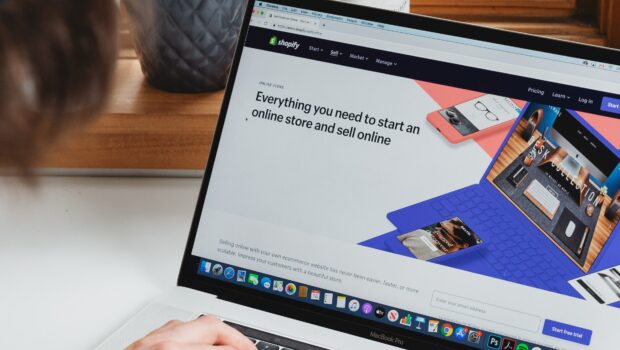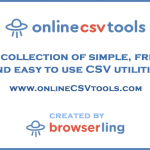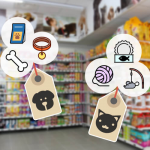A Quick Guide To Website Personalization And Its Benefits
The pandemic has been a significant catalyst to the popularity of e-commerce, with online sales experiencing a 25 percent growth in 2020. Over two billion people made online purchases that year, amounting to 4.2 trillion US dollars in worldwide sales.
It is rare to encounter a product or service that is entirely one-size-fits-all. And as e-commerce becomes more of the norm, creating websites that entice your audience is now necessary for many businesses.
This is where website personalization comes in. No matter what niche your business is in, you will have a good amount of competitors with their respective websites trying to attract your customer base as well. Below is a quick guide to the benefits of website personalization and how you can do it.
Website Personalization Defined
Website personalization is a process that creates personalized experiences for website visitors. Instead of a static landing page that looks the same to every visitor, website personalization tailors your website content. It features to suit the needs and characteristics of the website’s audience.
Personalization isn’t a new concept, especially in offline establishments. You often go into a coffee shop, and they would probably know you by name and your usual order. Salespeople usually tailor their service and make recommendations according to how a person looks or who they are with.
However, you do not have access to the same visual or auditory cues afforded to offline interactions with a website. As a workaround, you need to make do with online data to provide a similar experience.
The Benefits of Website Personalization
Personalizing your website content according to the needs and preferences of your audience helps your business in more ways than one.
In a survey released by information technology company Accenture, 91 percent of consumers prefer shopping with brands that recognize them and provide helpful information and recommendations.
Better Conversion Rates
Your website’s home page, landing pages, and product pages are often the ones experiencing the most action. Personalizing these pages to your target audience often leads to more conversions, whether a sale, signup, or download.
Professional marketers agree with this strategy as well. Sixty-three percent of marketers in the United States cite increased conversion rates as a major benefit of website or app personalization.
Increased Revenues
Alongside higher conversion rates come increased revenues. Once you get a website visitor through a successful customer journey, you usually end with a sale, adding to your business revenue.
Marketers have noticed this pattern, with 31 percent seeing increased e-commerce revenues due to personalizing their app or website.
Improved Customer Loyalty
Customers are loyal to brands that provide them with a positive experience. Website personalization is an excellent way to do this, as consumers enjoy being treated personally through location and language-specific content or tailored recommendations.
More Effective Calls to Action
A call to action (CTA) is a marketing staple across different industries, but not all of them perform the same way. Some CTAs work better than others, and, often, this advantage is due to a personalized approach.
In an analysis of over 300,000 calls to action, HubSpot has found that personalized CTAs perform 202 percent better than non-personalized ones.
Ways to Personalize Your Business Website
Now that we’ve explored website personalization and its benefits, the following tips can aid your website personalization strategy:
Use Data to Your Advantage
All website interactions occur entirely online, so you won’t have access to visual cues that will aid in a personalized customer experience. You will have to rely on customer data provided by your customers as they visit your site.
- Stated Data: This kind of data comes from information that the website visitor has voluntarily entered. Examples include survey/form responses, setting one’s location manually, and quiz or poll answers.
- Behavioral Data: This data is something website administrators glean from a visitor’s activity on the website. What pages do they visit? How much time do they allocate on those pages? What days or times do they visit the website?
- Contextual Data: This data is based on the visitor’s situation when visiting your site. What device are they using to access your site? Is it their first time on your website, or are they regular visitors?
As much as data can be helpful, make sure to be transparent about data collection. Customers appreciate a personalized approach, but they are also becoming increasingly concerned about their privacy.
Nearly 30 percent of consumers find some brands “too personal,” and 69 percent of them would stop or reconsider their relationship with certain brands due to this aggressive approach.
Map Out Buyer Journeys
Personalizing the website experience for your customers involves a lot more than just location-specific features or addressing them by name. You need to tailor the entire experience to their needs.
When customers visit your website, they often have a goal in mind. It becomes your job to identify this goal and create personalized conversion funnels for them.
Behavioral data from your website is an excellent way to identify customer journeys. These will help you create specific buyer personas for your business.
For example, you might get a surge of visitors the week before Valentine’s Day or other holidays. You could find out which products or pages are most popular during these times and create ways to make your catalog more enticing to these buyers.
Create Relevant Content
Quality, relevant content is one of the most tried and tested ways to maintain customer engagement. However, content doesn’t just mean blog posts, although a good selection of articles is also important.
Relevant content includes landing pages, product pages, lead magnets, document downloads, and webinar invites. You could include these pieces of content into your conversion funnels for specific buyer personas.
Use Personalized Calls to Action
Personalized CTAs have been proven to perform twice as well as the basic ones, and it’s time that businesses start using them more on company websites. They can take different forms, such as pop-ups, buttons, or site messages.
It could be challenging to find the perfect CTA for your website, but you could always experiment with a few ones to start and see which ones perform better than the rest. Make sure to consider your buyer personas when coming up with possible CTAs.
Keep Things Personal
Personalizing an entire website requires quite a bit of planning and coordination, but it is well worth it in the end. Make sure you keep an eye on emerging trends and listen to your customers. Staying attuned to their needs and addressing them as they will help you attract and build better customer relationships.











